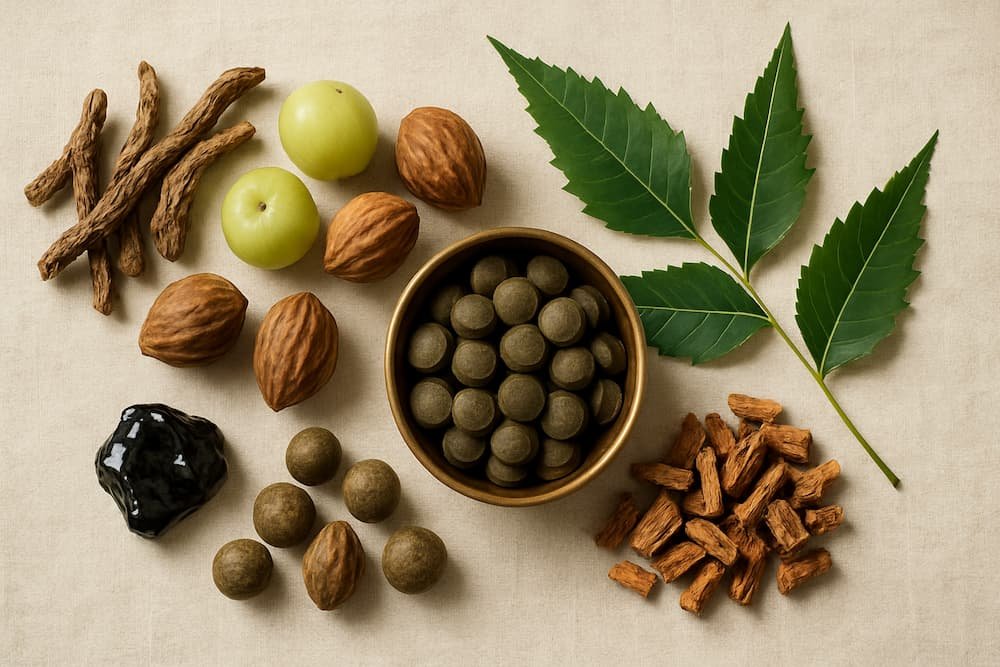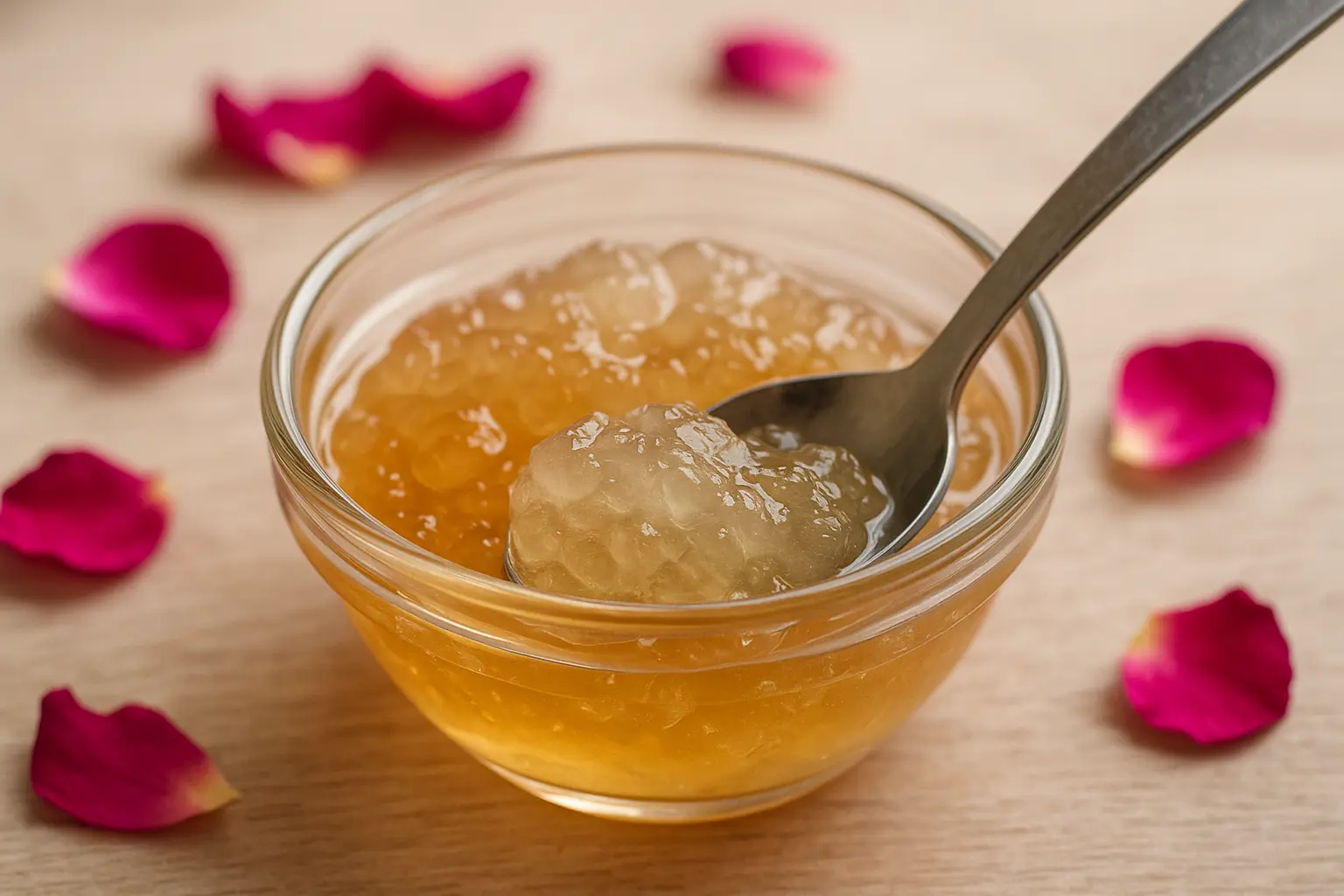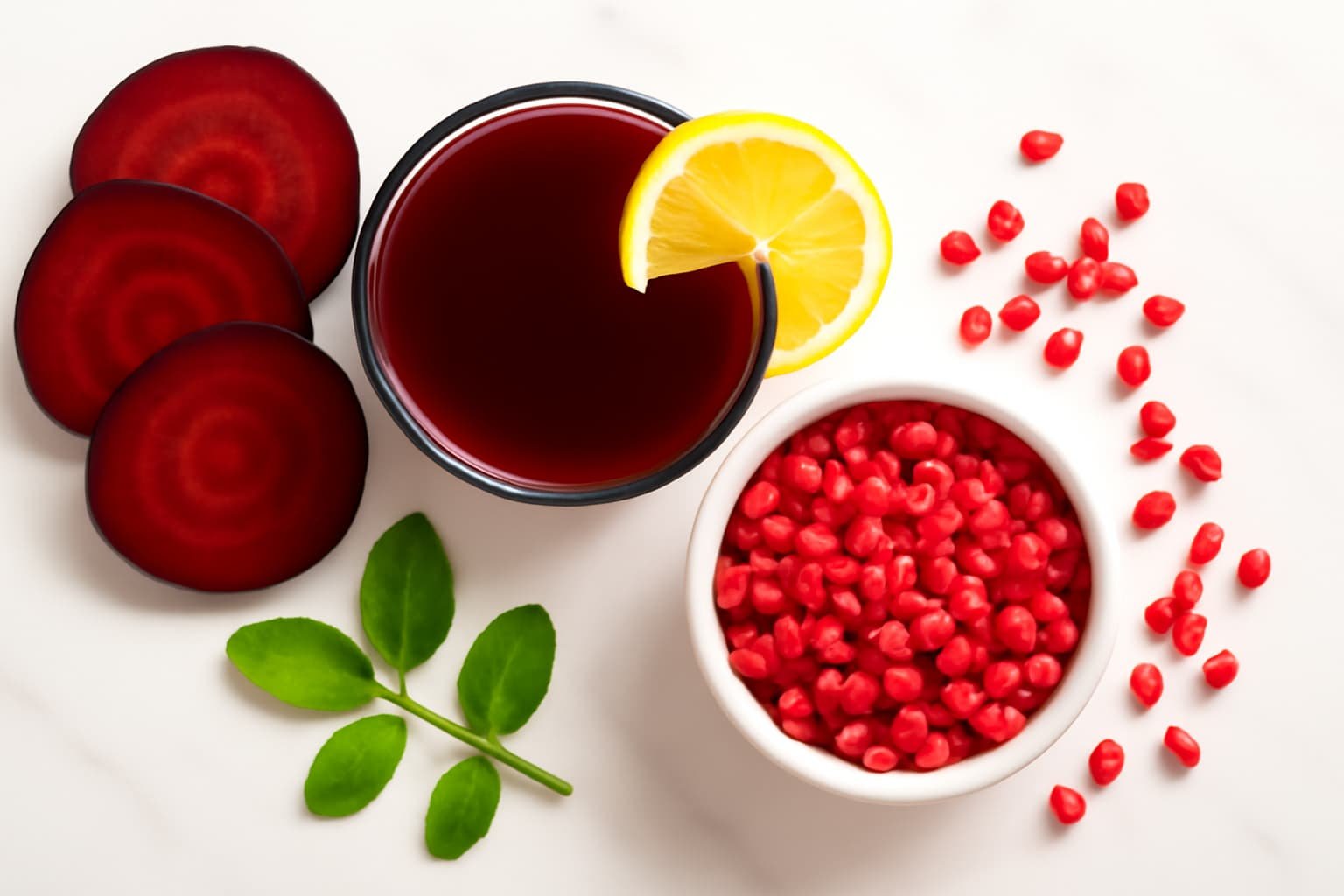Arogyavardhini Vati Uses, Benefits & Side Effects Expert Guide
Do you remember a family kitchen in India? It had a steel box with home remedies next to spices. One small bottle was for better gut, skin, and energy. For many, it’s not just nostalgia but a search for balance.
This section sets the stage for a detailed look at arogyavardhini vati uses. It respects tradition but also asks tough questions about proof and safety. You’ll learn about its benefits, where the evidence is, and where caution is needed.
The aim is simple: to explain arogyavardhini vati benefits without exaggeration. It covers its benefits for health like liver support, skin clarity, digestion, and cholesterol. It also talks about risks and provides information on ingredients, dosage, and brands like Dabur, Baidyanath, and Patanjali.
You’ll also see how to read arogyavardhini vati reviews carefully. It advises on what to ask an Ayurvedic doctor and when to be cautious. This guide is for real life, aiming for mindfulness, practicality, and grounding.
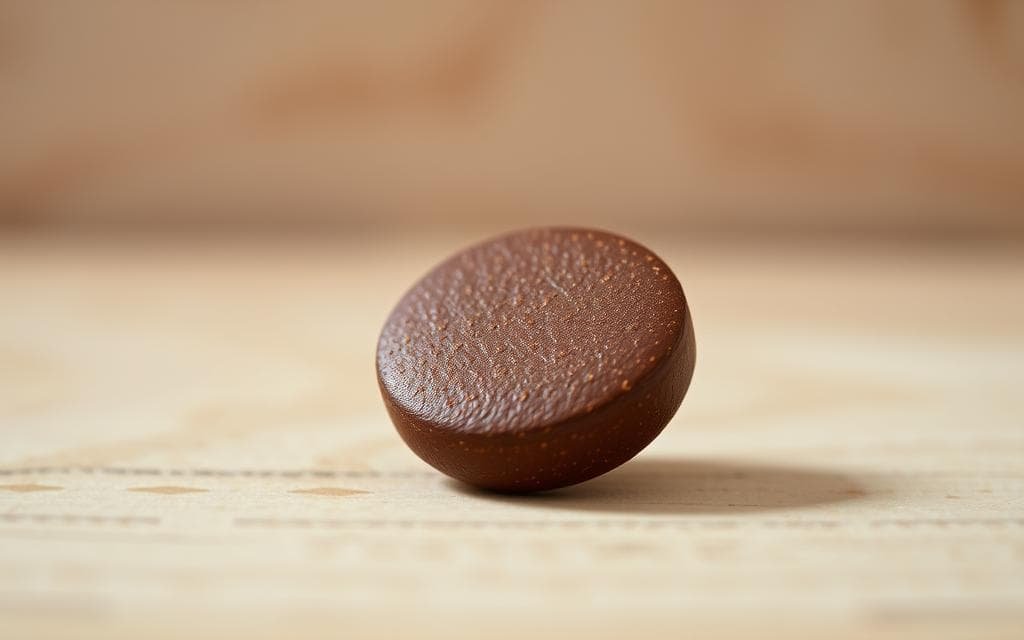
Arogyavardhini Vati Uses
Key Takeaways
- This guide introduces arogyavardhini vati uses with a balanced lens built for readers in India.
- It explains arogyavardhini vati benefits often cited for liver, skin, digestion, and cholesterol.
- It reviews benefits of arogyavardhini vati alongside safety notes and medical oversight.
- It highlights arogyavardhini vati benefits for health while flagging limits of current research.
- It helps interpret arogyavardhini vati reviews and choose reliable brands thoughtfully.
- It previews dosage basics and side effects so readers can talk to qualified clinicians.
- It centers on Arogyavardhini Vati Uses, Benefits & Side Effects Pro Tips for practical decisions.
What Is Arogyavardhini Vati? Meaning, Forms, and Traditional Context
Arogyavardhini vati is a key part of Ayurvedic medicine. It’s a small pill that helps keep the body balanced. People look for arogyavardhini vati meaning and find it means “that which enhances health.”
In India, it’s talked about in clinics and schools. Guides like arogyavardhini vati easy ayurveda focus on easy-to-understand information.
Arogyavardhini vati, gutika, and rasa explained
The pill is also called arogyavardhini gutika and arogyavardhini rasa. Each name shows a different way it’s made. The pills are dark and bitter, made from herbs and minerals.
Some call it sarvroghar vati, showing it’s used a lot in traditional medicine.
Doctors say arogyavardhini vati works by mixing herbs with minerals. This makes a stable pill that can be taken with different liquids.
Ayurvedic perspective on doshas and tridosha balance
Ayurveda sees health through Vata, Pitta, and Kapha. When these forces are out of balance, digestion and tissues suffer. Arogyavardhini vati is seen as a way to balance these forces.
It’s used for skin, appetite, and liver health. This shows it’s not just for one problem.
Guides like arogyavardhini vati easy ayurveda suggest simple diet and routine changes. They also talk about how the liquid it’s taken with can help balance the body.
Historical uses in Ayurveda and evidence overview
Old texts and current practice show it’s used for many things. This includes fever, acne, and poor digestion. It’s known by different names, like arogyavardhini gutika and sarvroghar vati.
Modern studies are few. They show mixed results, but mostly focus on liver and fat levels. But, the studies are small and not very strong.
| Aspect | Details | Why It Matters |
| Names in use | arogyavardhini vati; arogyavardhini gutika; arogyavardhini rasa; sarvroghar vati | Multiple titles show continuity across texts and pharmacies in India. |
| Form | Black, bitter tablets made from herbs and mineral bhasmas | Stable dosing allows pairing with suitable anupan for case-specific aims. |
| Ayurvedic lens | Tridoshahara; supports Agni and reduces Ama | Explains the broad, system-oriented use profile in clinics. |
| Domains cited traditionally | Liver comfort, skin clarity, digestion, appetite, metabolism | Matches the intent behind arogyavardhini vati meaning as a health promoter. |
| Evidence snapshot | Limited human data; small trials; combinations confound results | Signals exist, but attribution to a single pill remains cautious. |
Arogyavardhini Vati Ingredients and How It Works
A classical recipe mixes herbs, minerals, and refined substances. This blend affects digestion, bile flow, and metabolism. It shows how arogyavardhini vati works in the body.
Core botanicals: Triphala (Amalaki, Bibhitaka, Haritaki), Kutki, Guggulu, Chitraka, Shilajit
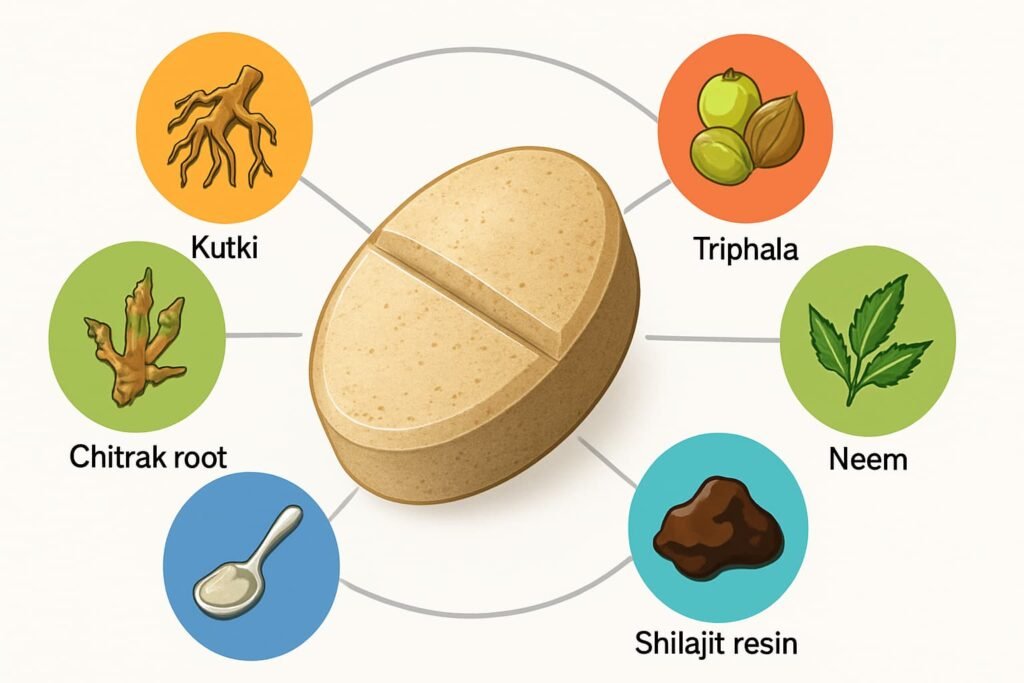
Triphala, a mix of Amalaki, Bibhitaka, and Haritaki, helps with digestion and cleansing. Kutki is valued for its support of the liver and bile. Shuddha guggulu helps with fats and inflammation.
Chitraka aids in digestion and appetite. Shilajit adds minerals and energy, nourishing tissues.
Mineral and metal bhasmas: Lauha, Abhraka, Tamra; purified mercury and sulfur considerations
The formula includes lauha, abhraka, and tamra bhasmas. These are processed into fine ash-like preparations. Mercury and sulfur are used after detox steps.
These components enhance the delivery and potency of the herbs.
Phytochemicals identified: flavonoids, alkaloids, tannins, phenols
Studies have found flavonoids, alkaloids, tannins, and phenols. These compounds from triphala and others offer antioxidant and digestive benefits. Shilajit adds humic substances.
The synergy of these molecules with bhasmas defines the formula’s activity.
How the formulation may influence Agni, Ama, and metabolism
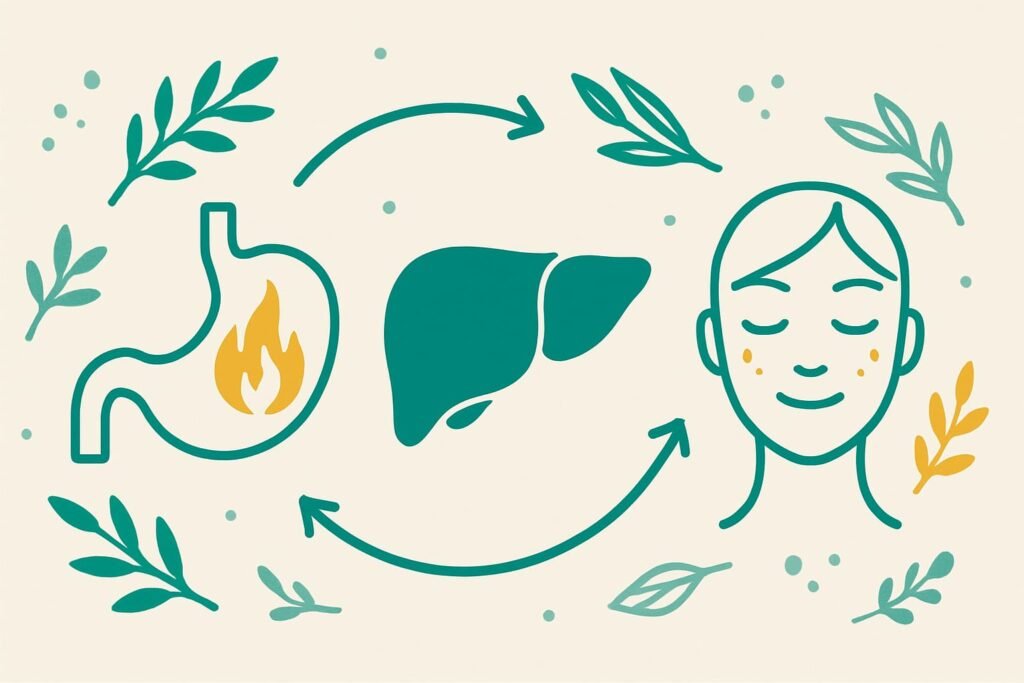
The blend aims to boost Agni and reduce Ama. It improves gut motility and bile flow. Kutki and chitraka support appetite and bile.
Triphala ensures regular elimination. Shilajit and minerals like lauha bhasma support nutrient handling and lipid movement.
| Component | Typical Role | Classical Proportion Highlights | Key Notes |
| Triphala (Amalaki, Bibhitaka, Haritaki) | Gut tone, detox, antioxidant | Amalaki 1, Bibhitaka 1, Haritaki 1 (parts) | Supports regularity and balances digestive pathways |
| Kutki (Picrorhiza kurroa) | Hepatobiliary support | 22 parts | Central to bile flow and metabolic clearance |
| Shuddha Guggulu (Commiphora wightii) | Lipid modulation, inflammation balance | 4 parts | Works with triphala to manage heaviness and congestion |
| Chitraka (Plumbago zeylanica) | Deepana–Pachana (appetizer–digestive) | 4 parts | Kindles digestive fire to address Ama |
| Shilajit (Shuddha Shilajatu) | Energy and tissue nutrition | 3 parts | Provides trace minerals and fulvic compounds |
| Lauha Bhasma | Mineral support | 1 part | Traditionally used for blood and metabolism |
| Abhraka Bhasma | Tissue rejuvenation | 1 part | Processed mica aimed at systemic support |
| Tamra Bhasma | Copper-based support | 1 part | Used in minute doses within the formula |
| Purified Mercury (Shuddha Parada) | Bioavailability enhancer | 1 part | Classically refined under strict protocols |
| Purified Sulfur (Shuddha Gandhaka) | Synergist in rasa preparations | 1 part | Combined with Parada per tradition |
| Neem leaf juice (Azadirachta indica) | Processing medium | As needed | Used to levigate and integrate the mass |
Summary note: The above matrix reflects arogyavardhini vati ingredients as cited in classical sources. It shows how it works through triphala, kutki, shuddha guggulu, chitraka, shilajit, and supportive bhasmas. These include lauha bhasma, abhraka bhasma, and tamra bhasma, alongside purified mercury and sulfur.
Evidence-Based Look at Arogyavardhini Vati Benefits
In India, people often hear about the benefits of Arogyavardhini Vati. But, looking closely at the evidence shows a mixed picture. It’s important to understand the context and quality of studies.
Strength of evidence and study limitations
There’s not much research today. Most studies are short and have few participants. They often mix many herbs, making it hard to see what Arogyavardhini Vati does.
How much is taken and how it’s tested varies. This makes it hard to compare studies. When looking at Arogyavardhini Vati’s benefits and side effects, remember these issues.
Animal and small human studies on liver and lipids
In rats, Arogyavardhini Vati helped with liver damage. It was given at about 90 mg/kg for a week. This helped keep liver enzymes and lipids in check.
In adults with high cholesterol (n=96), Arogyavardhini Vati was given after Arjuna bark. It helped lower triglycerides and LDL. But, it’s hard to know if it worked alone.
A small group of people with fatty liver got lifestyle changes and Arogyavardhini Vati. Their liver and lipid levels got better. But, it’s hard to say how much Arogyavardhini Vati helped.
Why traditional claims remain unproven scientifically
Old texts say Arogyavardhini Vati does many things. But, modern studies haven’t shown the same. We need more clear studies to know for sure.
Until we have better studies, we should be cautious. It’s important to look at both the good and bad sides of Arogyavardhini Vati.
| Focus Area | Population/Model | Intervention Details | Primary Signals Reported | Key Limitations |
| Liver enzymes under toxin stress | Rats | ~90 mg/kg for 1 week | Blunted rise in ALT and urea; lipid moderation | Short duration; animal model; dosing not directly translatable |
| Dyslipidemia | Adults (n=96) | Arjuna bark sequence, then Arogyavardhini 500 mg for 4 weeks | Lower triglycerides and LDL | No control; prior arjuna exposure; attribution unclear |
| Fatty liver markers | Adults (n=32) | Diet and exercise plus Triphala Guggulu and Arogyavardhini | Improved LFTs, better lipid profile, symptom relief | Combined regimen; small sample; lifestyle co-intervention |
| Lipid modulation | Rats | 1-week administration | Favorable changes in triglycerides and LDL/HDL | Preclinical; brief exposure; endpoint diversity |
Arogyavardhini Vati for Liver Health and Fatty Liver
In India, people follow several powerful home remedies for fatty liver. Many families in the country use the ancient remedy of Arogyavardhini Vati for liver health. It’s known for balancing Pitta and Kapha and improving Agni. People often ask if it helps with fatty liver and high liver enzymes.
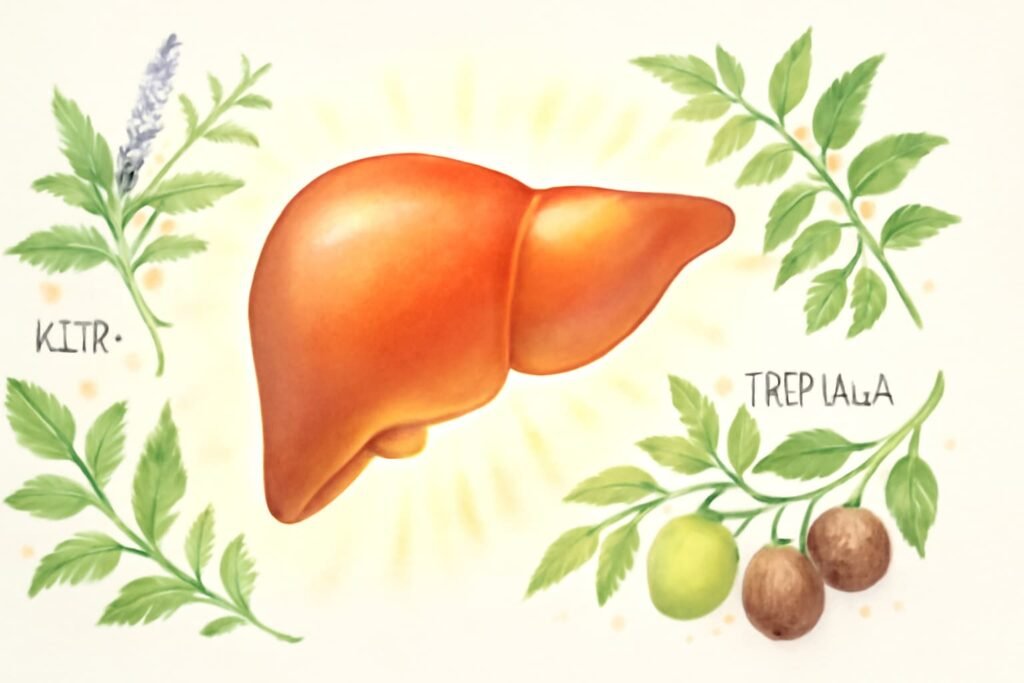
arogyavardhini vati uses for liver
Traditional claims: jaundice, elevated liver enzymes, fatty liver support
Old texts say bile flow, appetite, and digestion are linked to body heat and moisture. Users turn to arogyavardhini vati for jaundice when they notice changes in stool color and appetite. It’s also used for high liver enzymes caused by diet and alcohol.
Urban clinics see interest in arogyavardhini vati for fatty liver. This is due to changing diets and weight gain. They advise on light meals, less sugar, and regular exercise.
Study highlights: hepatoprotective signals in rats; small human data with combined formulas
Studies on rats show it might protect the liver after toxins. It has some effect on liver enzymes and fats. Small human studies combine it with Triphala Guggulu and lifestyle changes, tracking enzyme and cholesterol levels.
These studies suggest a direction, not proof. They highlight the importance of combinations and advice, not just the herb-mineral blend.
Comparisons and mentions: arogyavardhini vati vs Liv 52 for liver

People compare arogyavardhini vati and Liv 52 for liver health. One is an Ayurvedic formula, the other a herbal product by Himalaya. They differ in ingredients and theory.
No direct studies compare them. Choosing depends on personal goals, quality, and oversight.
Precautions for liver disease and monitoring
Those with liver disease need doctor’s care. Regular liver function tests, clear instructions, and quality products are key. This is because of metals in the formula.
Doctors may adjust the dosage of arogyavardhini vati for fatty liver. They consider body type, other medications, and nutrition goals. Self-dosing is not safe when liver enzymes are high or symptoms change quickly.
| Use Case | Context in Practice | What Is Tracked | Notes on Choice |
| Support in steatosis | arogyavardhini vati for fatty liver with diet and exercise | ALT, AST, ultrasound grade, weight | Discuss arogyavardhini vati dosage for fatty liver with a qualified physician |
| Enzyme spikes | arogyavardhini vati for elevated liver enzymes under supervision | LFT panel, symptoms, alcohol intake | Rule out acute causes; avoid self‑prescription |
| Jaundice | arogyavardhini vati for jaundice in adults in guided care | Bilirubin, INR, hydration, stool/urine color | Urgent evaluation if fever, pain, or confusion occurs |
| Product selection | arogyavardhini vati vs liv 52 for liver in everyday queries | Ingredient list, brand quality, practitioner advice | Different formulations; no direct comparative trials cited |
Arogyavardhini Vati for Skin: Acne, Psoriasis, Eczema, and Dandruff
Ayurveda says many skin problems come from Kapha and Pitta imbalances. Too much Kapha makes pores clog with oil. Too much Pitta makes skin hot and red.
Practitioners see arogyavardhini vati as a way to balance these. It has actions that help detox and cleanse under a doctor’s watch.
Kapha-Pitta skin, sebum, inflammation, and detox concepts
Kapha makes skin oily, leading to blackheads. Pitta adds heat, swelling, and pus. Detox and regular bowel movements help.
So, arogyavardhini vati is used to cool Pitta and lighten Kapha. It keeps elimination steady, too.
Arogyavardhini vati for acne, pimples, and oily skin
Many use arogyavardhini vati for acne. It’s paired with diet and cleansers to fight breakouts. The goal is to balance sebum and clear pores.
This approach is under a doctor’s guidance. It aims for calm, clear skin.
Potential roles in eczema itching and psoriasis (traditional)
Old texts say arogyavardhini vati soothes itch and scaling. It’s used for psoriasis and chronic patches with emollients and stress care.
Eczema routines focus on stopping itch and supporting the skin barrier. The detox aspect is kept small and watched by a doctor.
Combinations: with neem juice or with triphala for skin
Doctors talk about arogyavardhini vati with neem juice for cooling and fighting germs. Others suggest it with triphala for detox and regularity.
These pairings are traditional. Always tell your doctor about all medicines before starting.
| Skin Focus | Ayurvedic Lens | Traditional Role of Arogyavardhini | Common Adjuncts | Notes | Acne and Oiliness |
| Kapha excess, Pitta irritation, clogged pores | Supports shodhana and shothahara; cited as arogyavardhini vati for acne | Gentle cleansers, non-comedogenic moisturizers, diet tweaks | Mentioned as arogyavardhini vati for pimples and oily skin in clinic narratives | ||
| Psoriasis | |||||
| Pitta-Kapha with scaling and heat | Used cautiously as arogyavardhini vati for psoriasis within broader care | Moisturizing oils, stress management, sun exposure as advised | Symptom-led plans; medical supervision is emphasized | ||
| Eczema | |||||
| Pitta and Vata with itch and dryness | Detox framing with barrier-supportive routines | Fragrance-free emollients, lukewarm baths | Trigger tracking and gentle textiles are helpful | ||
| Dandruff and Hair Fall | |||||
| Pitta-Kapha on scalp with flakes and shedding | Discussed as arogyavardhini vati for dandruff and hair fall | Anti-dandruff shampoos, scalp oils selected by doctor | Focus on scalp hygiene and stress reduction | ||
| Combination Ideas | |||||
| Cooling and cleansing synergy | arogyavardhini vati with neem juice benefits; arogyavardhini vati with triphala for skin | Neem juice (Azadirachta indica), Triphala routines | Combinations are traditional; evidence from trials is limited |
Traditional guidance often cites one tablet twice daily after meals with water, under a physician’s care, with discussion of all concurrent medicines before starting any herbomineral preparation.
Arogyavardhini Vati for Digestion, IBS, Constipation, and Indigestion
In Indian homes, people use this special mix when they feel bloated or slow. They wonder how to use arogyavardhini vati and when to take it. They also ask about IBS, grahani, constipation, and indigestion, and how it fits into their daily lives.
Guidance on arogyavardhini vati dosage for adults is given by experts, taking into account each person’s needs.
Agnimandya, Ama, and Pachan-Deepan rationale
Ayurveda says slow digestion and bad sleep lead to Agnimandya and Ama. The formula is meant to boost Agni and clear out residue. This helps with indigestion and gas.
Many doctors suggest taking it after meals, when the stomach can handle it better.
There’s debate on when to take arogyavardhini vati, but traditional advice is after eating. The right dosage depends on appetite, stool, and energy, not just a set amount.
Traditional use in IBS (Grahani) and constipation
In grahani, or IBS, the goal is to reduce dampness and restore regular bowel movements. The formula helps with urgency, supports solid stools, and eases cramps. Patients often see fewer symptoms with warm, regular meals and spices like cumin and ginger.
For constipation, warm water, early dinners, and fiber-rich foods like guava or papaya are recommended. Doctors adjust the dosage to avoid straining.
Indigestion, anorexia, and appetite support claims
For low appetite, like in anorexia, the formula aims to increase hunger and reduce nausea. Small meals with ghee or buttermilk are suggested. This approach is based on the pachan-deepan rationale for indigestion.
Early breakfasts, mindful eating, and a steady spice level help the gut adjust. Many doctors recommend taking arogyavardhini vati after meals, with warm water, based on tolerance and the overall treatment plan.
Arogyavardhini Vati and Metabolism: Obesity, Weight, and Cholesterol
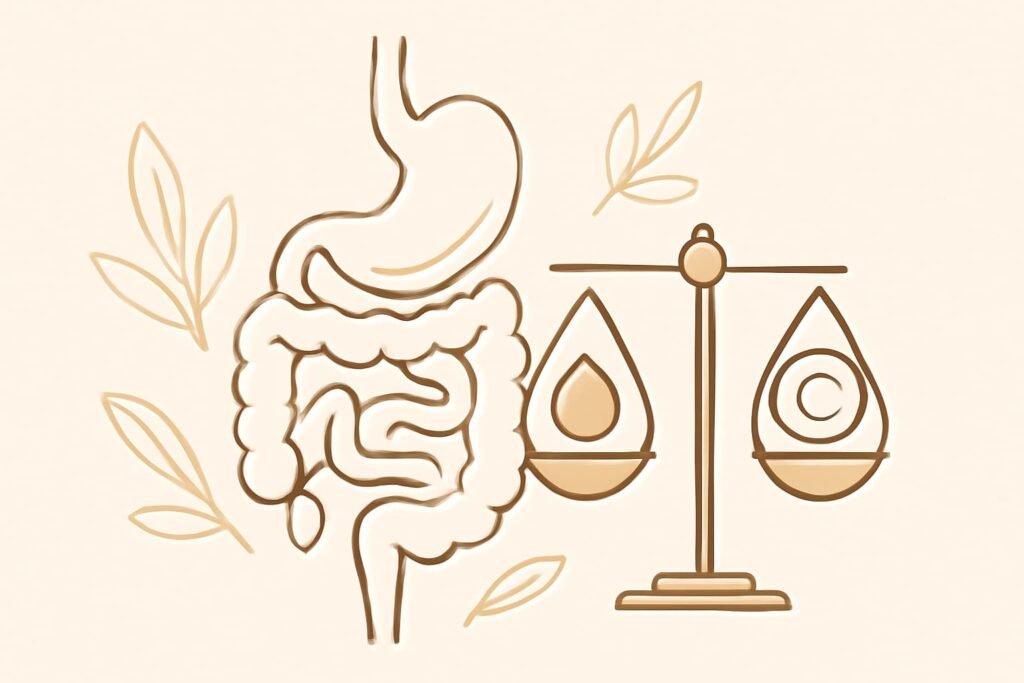
In Ayurveda, weight is linked to how the body uses food energy and waste. If digestion slows, Ama builds up and slows metabolism. This view is used when talking about obesity, lipid balance, and herbs in care.
Weight management via Ama reduction and Agni support
Traditional use shows a steady rise in Agni means better nutrient use and lighter meals. People add arogyavardhini vati to their routine for weight loss. The goal is to clear heaviness, reduce cravings, and boost metabolism without harsh stimulants.
Plans include early dinners, fiber-rich foods, and plenty of water. They also focus on mindful sleep and stress control. Changes are made slowly, which is helpful for obesity with deep roots.
Blood lipids: triglycerides, LDL, HDL signals from limited studies
Small human reports and rat data show changes in triglycerides, LDL, and HDL after short periods. Some Indian clinics use arjuna bark before adding the herb. This makes it hard to know how much each step helps. These findings are signals, not proof, so lipid panels guide choices.
People often wonder if these changes affect daily energy. Looking at meals, steps, and sleep tells the full story. Lab trends and waist measures, along with comfort after meals, are key.
Arogyavardhini vati for cholesterol and weight loss results
People use arogyavardhini vati for cholesterol when diet changes are slow. Stories talk about inch loss more than sharp weight drops. Most credit a mix of measures. Safety means medical checks, spaced dosing, and monitoring triglycerides, LDL, and HDL over time.
Those looking for arogyavardhini vati weight loss results often track their weekly routines. They log portions, morning walks, and mood to see what boosts metabolism. The aim is steady habits that fit Indian home cooking and daily life.
Arogyavardhini Vati Uses, Benefits & Side Effects Pro Tips
A concise overview helps readers in India weigh tradition with prudence. This snapshot outlines practical Arogyavardhini Vati Uses, Benefits & Side Effects Pro Tips while keeping safety at the center.
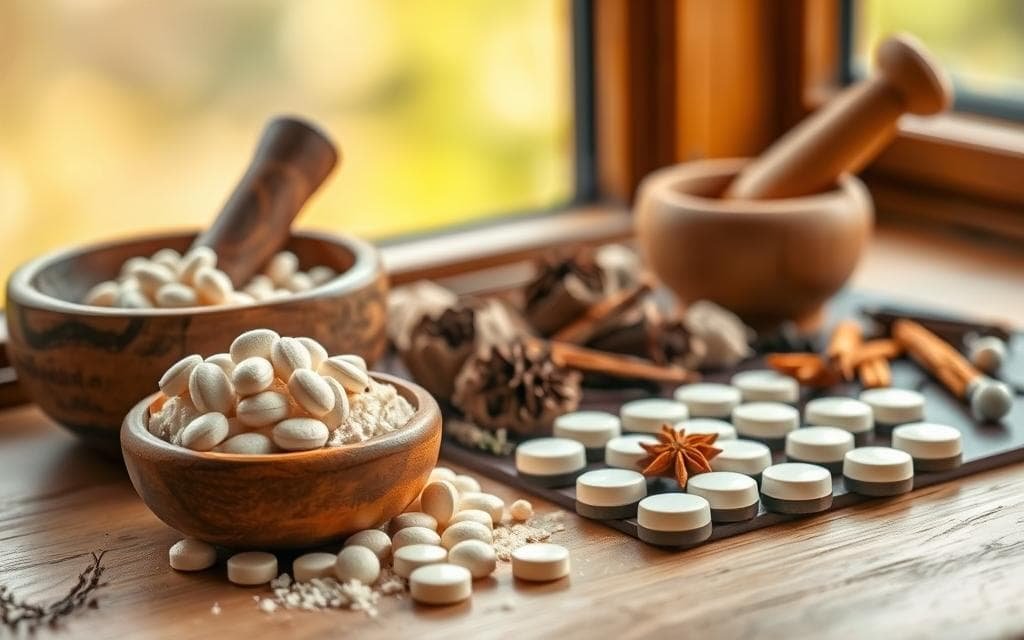
Arogyavardhini Vati Uses, Benefits & Side Effects
Snapshot of common uses: liver, skin, digestion, lipids
Classical use spans liver support for jaundice, fatty liver signs, and raised enzymes. Many also apply it for acne, eczema, psoriasis, and dandruff.
Digestive uses include constipation, indigestion, and IBS patterns. Some practitioners consider it for lipid balance when triglycerides or LDL rise.
Key benefits and where evidence is weak or mixed
Early signals suggest hepatoprotective and lipid-normalizing potentials. These come from animal work and small human observations. Outcomes often come from combination regimens and short courses.
Because designs vary and sample sizes are small, results remain mixed. Readers should treat any claim as provisional and discuss plans with qualified clinicians.
Side effects, heavy metal risks, and sourcing guidance
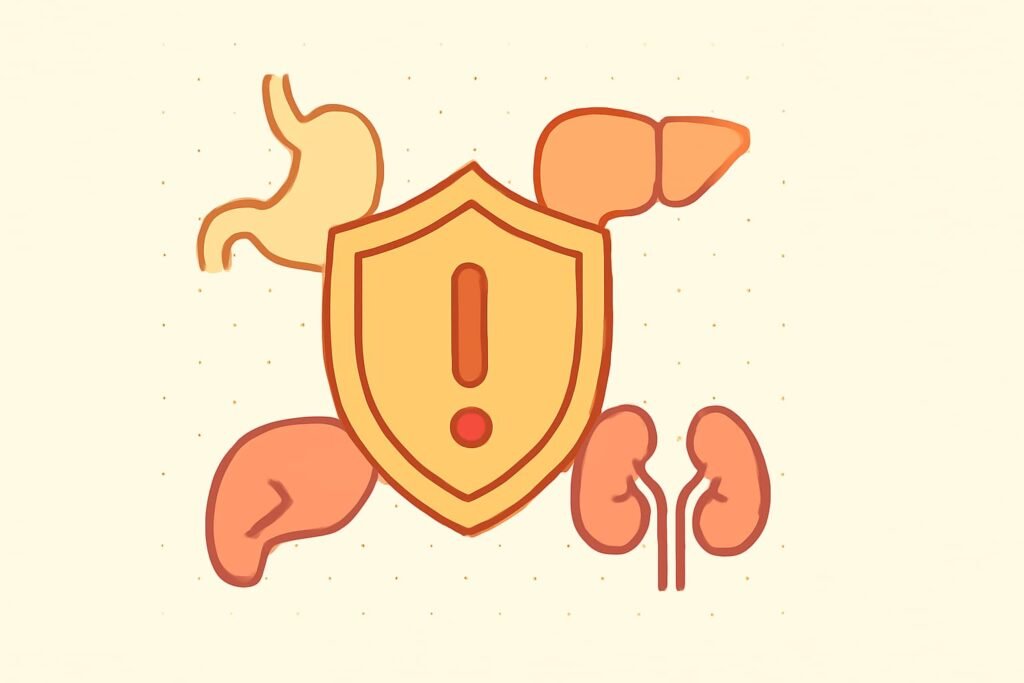
Reported arogyavardhini vati side effects include gastric upset, nausea, and altered bowel habits. Processed metals are part of the recipe, requiring strict quality control.
Research has noted mercury accumulation in animal kidneys with short exposure. Long-term human safety is uncertain, making arogyavardhini vati precautions essential.
Source from reputable Indian manufacturers with GMP, clear labels, and batch tests for mercury, lead, and arsenic. Brands with transparent certificates reduce risk without removing the need for oversight.
Pro tips for safe, supervised use in India
- Consult an Ayurvedic physician and disclose therapy to a primary doctor to manage arogyavardhini vati interactions with allopathy.
- Begin at the lowest supervised dose and track LFTs, renal function, and lipids when used for liver or dyslipidemia goals.
- Avoid in children, pregnancy, and lactation unless specified. Stop and seek care if rashes, abdominal pain, dark stools, or unusual fatigue appear.
- Maintain a balanced diet, limit alcohol, and review all supplements to minimize cumulative heavy metal exposure.
Used this way, Arogyavardhini Vati Uses, Benefits & Side Effects Pro Tips become actionable guidance. They align tradition with modern safeguards in India.
Dosage Guidance and How to Take Arogyavardhini Vati
Using arogyavardhini vati safely means knowing the right amount and when to take it. Brands like Baidyanath, Dabur, and Divya give basic directions. But, getting advice from a doctor is always best.
Traditional dosage ranges and why medical supervision is essential
Old texts say to take 500 mg to 1 gram of arogyavardhini vati each day. Doctors in India adjust this based on age, digestion, and other treatments. They also check for metals in the formula and suggest blood tests.
Don’t take more than your doctor says. They decide if you need more or if you should take it with food. This is important if you’re already taking other medicines.
Arogyavardhini vati dosage for adults and condition-specific notes
Adults usually take one tablet of arogyavardhini vati twice a day. The dose can change based on what you’re trying to improve, like your liver or skin. Your doctor will consider your body type and how you feel.
If you’re not sure, start with a small dose. Then, talk to an Ayurvedic doctor. They will adjust your dose based on your symptoms and test results.
How to use: with honey, with ghee, with warm water; best anupan
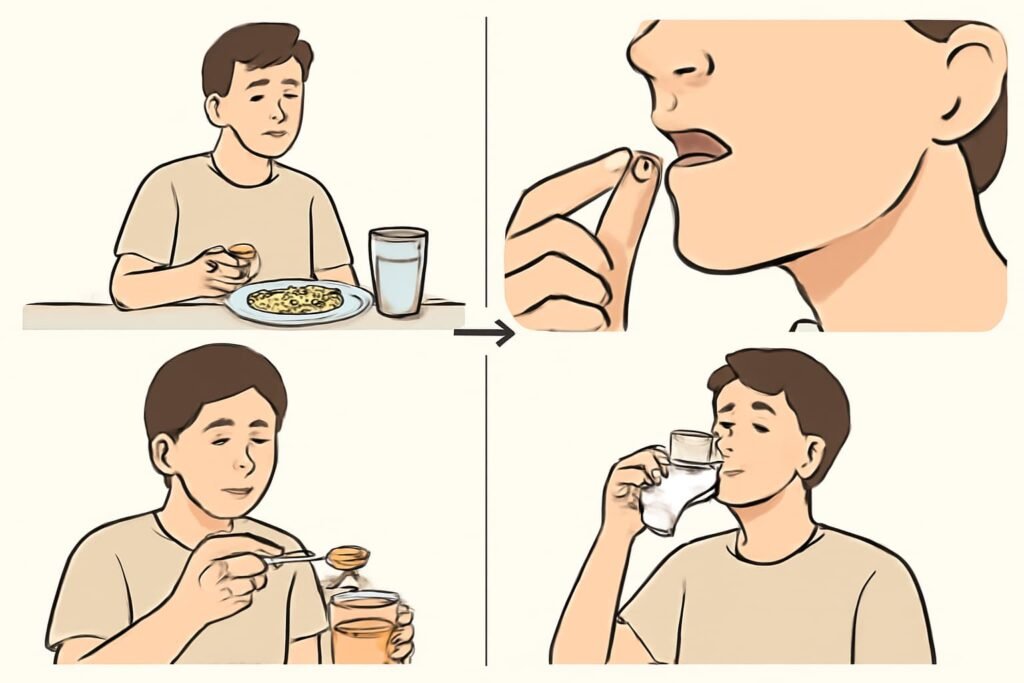
Most people take arogyavardhini vati with warm water for digestion. For skin or Kapha issues, honey is sometimes used. Ghee is better for Pitta or nourishment.
Choose your anupan based on your digestion and the season. If you have diabetes or a sensitive stomach, talk to your doctor about the best choice.
Arogyavardhini vati best time to take, before or after food, morning or night
Many take arogyavardhini vati after meals to avoid stomach upset. Taking it in the morning and evening is common. Your doctor will decide the best time for you.
If you’re unsure, your doctor might suggest taking it after breakfast and dinner. This helps keep your body balanced and lets you see how you react.
| Topic | Practical Pointer | Why It Matters |
| Core range | Traditional 500 mg–1 g/day; follow expert advice | Balances classical guidance with current safety needs |
| Adults | Common label: 1 tablet twice daily | Simple starting point for arogyavardhini vati dosage for adults |
| With food | Preferably after meals | Supports comfort for those with sensitive stomachs |
| Anupan choice | Warm water standard; arogyavardhini vati with honey for Kapha/skin; arogyavardhini vati with ghee for Pitta | Aligns delivery with goal and constitution |
| Timing | Morning and evening | Answers when to take arogyavardhini vati morning or night in a balanced way |
| Clinical oversight | Regular review and labs when indicated | Addresses safety while optimizing outcomes |
Special Situations: Hypothyroidism, Diabetes, Teenagers, and Pregnancy
Everyone’s health needs are different. When using herbomineral formulas, careful watching and lab tests are key. They help avoid problems with other medicines.

Arogyavardhini vati uses during Special Situations: Hypothyroidism, Diabetes, Teenagers, and Pregnancy
Arogyavardhini vati for hypothyroidism and dosage cautions
Some doctors talk about using arogyavardhini vati for hypothyroidism. But, there’s not much proof it works. So, it’s important to watch thyroid levels and symptoms closely.
It’s also important to set the right dosage. A doctor who knows about TSH levels and levothyroxine therapy should do this.
People often ask about taking it with food or other medicines. A doctor can help with this. They can make sure it’s safe and watch for any changes in how you feel.
Can diabetics take arogyavardhini vati and interactions to consider
Diabetics might wonder if they can take arogyavardhini vati. It could affect blood sugar levels. So, it’s smart to check blood sugar often.
It’s also important to talk to your doctor about it. They can help with any problems with medicines like metformin or insulin.
Watch for signs like low blood sugar, dehydration, and changes in appetite. Always follow your doctor’s advice on changing doses.
Arogyavardhini vati dose for teenager and growth considerations
Parents should be careful with arogyavardhini vati for teenagers. Growing bodies handle metals differently. There’s not much research on long-term safety.
Only a doctor who knows Ayurveda should decide if it’s right for a teen. They should also decide how long to use it.
It’s important to check liver, kidney, and blood health regularly. If school or exams are stressful, the treatment might need to change.
Can pregnant women take arogyavardhini vati and lactation safety
Many families wonder if pregnant women can take arogyavardhini vati. Most doctors say no because of the metals and unknown risks. The same goes for breastfeeding.
If a doctor thinks it’s okay, they should keep a close eye on things. Diet, rest, and gentle, doctor-approved options are usually better.
| Situation | Key Question | Clinical Focus | Monitoring | Practical Note |
| Hypothyroidism | Use arogyavardhini vati for hypothyroidism? | Align with levothyroxine; avoid absorption conflicts | TSH, FT4, FT3, pulse, fatigue | Specialist sets arogyavardhini vati for hypothyroidism dosage |
| Diabetes | Can diabetics take arogyavardhini vati? | Watch glycemic shifts and drug–herb effects | Fasting/PP sugars, A1C, symptoms of hypo | Coordinate with antidiabetic regimen changes |
| Teenagers | Safe arogyavardhini vati dose for teenager? | Growth, organ maturity, minimal exposure | Liver and renal profile, CBC | Use only if prescribed; review duration strictly |
| Pregnancy/Lactation | Can pregnant women take arogyavardhini vati? | Avoid unless clear, specialist-led indication | Maternal status; infant cues if nursing | Prefer non-metal alternatives and lifestyle care |
Safety Profile, Side Effects, and Interactions
Safety depends on the product source, dose, and medical oversight. Users in India often ask: can we take arogyavardhini vati daily, and is arogyavardhini vati safe for long term use. The answers hinge on testing, quality, and regular lab monitoring guided by a qualified clinician.
Clinical context matters. People on medicines for liver, kidney, glucose, lipids, or blood pressure should speak to their doctor first to address possible risks and the need for tests.
Arogyavardhini vati side effects on liver and kidney
Reported reactions include nausea, abdominal discomfort, or loose stools. Concerns about arogyavardhini vati side effects on liver arise when products are contaminated or used at high doses. Similar caution applies to arogyavardhini vati side effects on kidney, specially if a person already has renal issues or uses other nephrotoxic agents.
Short experimental work has not settled long-term outcomes. That is why clinicians advise baseline and follow-up LFTs and renal panels while using this formula under supervision.
Heavy metal content concerns: mercury, copper, and toxicity research
Traditional versions may contain processed metals. Some studies on Ayurvedic medicines show elevated blood levels of mercury or lead in users. Limited animal data specific to this formula have noted mercury accumulation in kidneys, with mixed signals on organ function in short courses. These findings prompt careful sourcing and dose control.
Consumers should prefer brands that publish batch-wise heavy metal testing and comply with Indian pharmacopeial standards. Avoid buying unlabeled or roadside products.
Arogyavardhini vati interactions with allopathy and monitoring
Share all medicines with your physician to evaluate arogyavardhini vati interactions with allopathy. Extra vigilance is warranted when pairing it with hepatotoxic drugs, nephrotoxic agents, or therapies that modify lipids, glucose, or coagulation.
- Coordinate timing and dosing to reduce overlap with high-risk drugs.
- Plan periodic LFTs, renal function tests, lipid profile, fasting glucose, and INR or PT as relevant.
- Stop and seek care if jaundice, dark urine, edema, or severe GI symptoms occur.
Is arogyavardhini vati safe for long term use and daily use considerations
Given limited human safety data, clinicians are cautious when asked, is arogyavardhini vati safe for long term use. Many advise time-bound courses with reassessment instead of open-ended use. For those wondering, can we take arogyavardhini vati daily, the usual approach is a defined plan with medical review, not continuous self-use.
Dose, duration, and anupan (honey, ghee, or warm water) should be individualized by a qualified practitioner, with stop rules and lab checkpoints documented.
| Risk Area | What to Watch | Who Needs Extra Caution | Suggested Monitoring |
| Liver | Fatigue, pruritus, pale stools, right upper quadrant pain | People on isoniazid, methotrexate, or alcohol use | LFTs (ALT, AST, ALP, bilirubin) at baseline and 4–8 weeks |
| Kidney | Swelling, reduced urine, rising creatinine | CKD, use of NSAIDs, aminoglycosides, or contrast dyes | Serum creatinine, eGFR, electrolytes at baseline and 4–8 weeks |
| Metabolic | Changes in lipids or glucose | Diabetes, dyslipidemia, statins or antidiabetic drugs | Lipid panel, fasting glucose or HbA1c per clinician advice |
| Hematologic | Bruising or gum bleeding | Warfarin, direct oral anticoagulants, antiplatelets | INR/PT or platelet function monitoring as indicated |
| General Tolerance | Nausea, cramps, loose stools, metallic taste | History of GI sensitivity | Symptom check-in after 1–2 weeks; adjust dose or stop |
Brand Choices, Quality, and Storage
People often compare labels before they buy. But quality is what really matters. In India, people ask which brand of arogyavardhini vati is best. They also want to know how long it takes to work and how to store it.
Which brand of arogyavardhini vati is best: Baidyanath, Dabur, Divya
Baidyanath, Dabur, and Divya are well-known brands. They vary in how they source their ingredients and test their products. Look for GMP certification and COAs that show heavy metal tests per batch.
Buy from authorized pharmacies or official brand outlets. Check the seal, batch number, MRP, and manufacturing address. If a price seems too low, it’s a warning sign.
How long does arogyavardhini vati take to work and setting expectations
Results vary based on your goals and how you follow the treatment. Some see improvements in digestion quickly. But skin oiliness and bowel balance may take a few weeks.
Changes in lipids or liver markers take longer, often weeks. Labs and clinical review are needed. A steady plan from a clinician is better than quick fixes.
Arogyavardhini vati storage and expiry and counterfeit avoidance
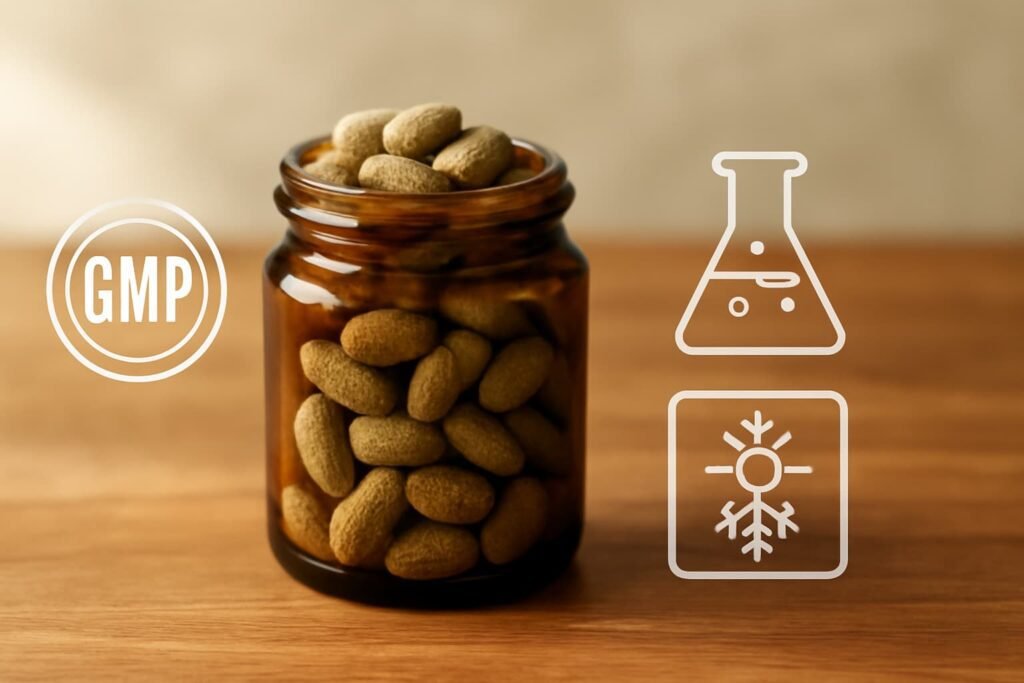
Keep the bottle in a cool, dry place, away from sunlight and moisture. Always close the cap tightly after use. Follow the labeled date for storage and expiry, and discard if the smell, color, or texture changes.
To avoid fakes, match the batch number on cap and label. Check the hologram and verify the manufacturing and expiry print. Do not accept broken seals or smudged codes.
Arogyavardhini vati review signals and what to look for
A good review mentions the exact indication, dose, duration, and if a doctor advised it. Strong reviews also mention lab values before and after use, and any side effects.
Trust verified purchases and clinician guidance over dramatic claims. Balanced feedback that states both benefits and limits is more useful than one-line praise or blame.
- Brand checks: GMP, batch-wise metals testing, full label, sealed packs.
- Use expectations: digestion may shift sooner; lipids and liver need time and monitoring.
- Storage: cool, dry, no sun; respect expiry; watch for changes in the tablets.
- Reviews: verified, data-backed, and clear on use and duration.
| Brand | Quality Signals | Where to Buy | User Notes |
| Baidyanath Arogyavardhini Vati | GMP label, batch number, clear ingredient panel | Authorized pharmacies, official outlets | Check seal and hologram; compare MRP and batch details |
| Dabur Arogyavardhini Vati | COA availability, labeled proportions, tamper-evident cap | Company counters, licensed stores | Keep invoice; verify manufacturing and expiry print clarity |
| Divya Arogyavardhini Vati | GMP logo, batch-wise testing reference, consistent packaging | Patanjali stores, approved retailers | Inspect for uniform tablets; avoid damaged or faded packs |
Condition-Focused Notes and Combinations
These notes offer practical tips for different health conditions. They are based on traditional wisdom but also follow modern safety guidelines. They help doctors make decisions together with their patients.
Arogyavardhini vati for elevated liver enzymes and jaundice in adults
Many doctors in India use arogyavardhini vati for high liver enzymes. They do this when it fits the person’s health history and diet. For adults with jaundice, they might also use arogyavardhini vati, along with staying hydrated and eating light.
They also recommend rest. But, they keep an eye on liver function tests and get medical advice often.
Arogyavardhini vati for gallbladder stone and when to avoid
Doctors talk about using arogyavardhini vati for gallstones only in mild cases. If symptoms are severe, like pain with fever or vomiting, they advise against it. They say to seek urgent medical help.
People who need surgery for their gallbladder should not delay it. They should follow their doctor’s advice.
Arogyavardhini vati with punarnava for fatty liver support
Some doctors mix arogyavardhini vati with punarnava for fatty liver. They do this when the person is working on their weight, sleep, and alcohol use. The goal is to support liver function gently.
They watch liver enzymes, fats in the blood, and blood pressure closely. They adjust the treatment based on individual needs and current medications.
Arogyavardhini vati for dandruff and hair fall and adjunct care
Doctors sometimes use arogyavardhini vati for scalp issues like dandruff and hair loss. They aim to balance the body’s energies and reduce itchiness. They also advise on keeping the scalp clean and using mild shampoos.
They remind people to protect their scalp from the sun. If scalp problems persist, they suggest seeing a dermatologist.
- Coordinate with an MBBS or Ayurveda physician for dosing and duration.
- Track labs when using arogyavardhini vati for elevated liver enzymes or fatty liver plans.
- Avoid delays in care for acute pain, obstructive jaundice, or fever.
- Review prescriptions to reduce interaction risks during any combination use.
Conclusion

Arogyavardhini Vati is at the intersection of old and new. It’s known for helping the liver, skin, digestion, and balancing fats. Early studies hint at its benefits, but more research is needed.
It’s important to be safe when using it. Some versions might have harmful metals. Always check with a doctor first. This is true for people in India.
How you take it matters too. Doctors can guide you on the best way to use it. Add healthy habits like eating right, staying hydrated, and exercising. This can help you get the most benefits while staying safe.
In summary, think carefully about using Arogyavardhini Vati. Get advice from a doctor and choose trusted sources. Until more studies come out, use it carefully and under supervision. This way, you can enjoy its benefits safely in India.
FAQ
What does “arogyavardhini vati uses” cover in Ayurveda?
It helps with liver issues, like jaundice and fatty liver. It also treats skin problems, such as acne and eczema. It’s used for digestive issues and helps balance lipids.It’s also used for detox. But, it’s important to get medical advice before using it.
What is Arogyavardhini Vati, and how is it known in classics?
It’s a traditional Ayurvedic tablet. It’s also called Arogyavardhini Gutika or Arogyavardhini Rasa. The name means “health-promoting tablet.”It’s black and bitter. It’s made from plants and minerals.
How do “vati,” “gutika,” and “rasa” differ in this context?
“Vati” and “gutika” mean tablet. “Rasa” means it includes special ingredients like mercury and sulfur. They all refer to the same thing.
How does Ayurveda explain its action on doshas?
It balances Vata, Pitta, and Kapha. It helps with digestion and reduces toxins. It also helps with liver and skin issues.
What are the classical ingredients in Arogyavardhini Vati?
It has Triphala, Kutki, Guggulu, Chitraka, and Shilajit. It also has minerals like iron and copper. Mercury and sulfur are included too.
How might it work mechanistically in Ayurvedic terms?
Triphala helps with digestion and detox. Kutki supports the liver. Guggulu helps with lipids.Chitraka and Shilajit support the body. Together, they help with digestion and reduce toxins.
What phytochemicals have been identified?
It has flavonoids, alkaloids, and tannins. It also has carbohydrates and proteins. These help with digestion and detox.
How strong is the scientific evidence for benefits?
The evidence is weak. Most studies are small and short. They use many herbs at once.There’s some evidence for liver and lipid benefits. But, more research is needed.
What do studies say about liver and lipid effects?
Rat studies show it may help with liver and lipid issues. Small human studies show it may improve liver and lipid levels.But, more research is needed to be sure.
Why are many traditional claims unproven?
There’s a lack of big studies. Many studies use many herbs at once. They are short and have method problems.This makes it hard to know for sure.
Is Arogyavardhini Vati useful for fatty liver?
Yes, it’s used for fatty liver. It helps with liver and metabolism issues. But, use it only with doctor advice.
How does it compare with Liv 52 for liver?
They are different. There are no strong studies comparing them. Choose based on your health needs.
What precautions apply in liver disease?
Don’t take it without a doctor’s say-so. Get liver tests before and after. Stop if you get worse.See a doctor right away if you have jaundice or bile problems.
Can it help acne, oily skin, or psoriasis?
Yes, it’s used for skin issues. It helps with sebum and inflammation. But, talk to a doctor first.
Is Arogyavardhini Vati good for pimples and blackheads?
It’s used for oily skin and acne. It’s taken after meals. But, more research is needed.
Can it be combined with neem juice or Triphala for skin?
Many use it with neem juice or Triphala. It helps with detox and digestion. But, more research is needed.
What about digestion, IBS, and constipation?
It helps with digestion and bowel issues. It’s taken after meals. But, more research is needed.
Does it help with appetite and indigestion?
Yes, it helps with digestion. It’s taken after meals. But, watch for stomach problems.
Can it aid weight management or cholesterol?
It’s used for weight and cholesterol. But, more research is needed. Lifestyle changes are key.
What are key benefits and where is evidence mixed?
It helps with liver, skin, and digestion. But, the evidence is mixed. Be careful.
What side effects and risks should users know?
It may cause stomach problems. There’s a risk of heavy metal poisoning. Choose trusted brands.
What are pro tips for safe, supervised use in India?
See an Ayurvedic doctor first. Tell your regular doctor. Start slow and monitor your health.Avoid it in children and pregnant women. Stop if you have bad side effects.
What is the usual Arogyavardhini Vati dosage for adults?
Adults usually take 500 mg to 1 g a day. It’s best to take it after meals. Your doctor will guide you.
How to take it: with honey, ghee, or warm water?
Warm water is common. Honey or ghee may be used for specific needs. Your doctor will decide.
When is the best time to take it—before or after food?
It’s best after meals. This helps with digestion. Your doctor may suggest a different time.
Is Arogyavardhini Vati helpful for hypothyroidism?
There’s no strong evidence. If you’re considering it, do it under doctor’s watch. Get thyroid tests.
Can diabetics take Arogyavardhini Vati?
Maybe, but only with doctor’s advice. It may affect blood sugar. Monitor your sugar levels closely.
Is it suitable for teenagers?
No, avoid it in teenagers. It contains metals that may harm growth. Only use it if a doctor says it’s okay.
Can pregnant or breastfeeding women use it?
Most doctors say no. It contains metals that may harm the baby or baby’s milk. Use it only if a doctor says it’s safe.
What are possible side effects on liver and kidneys?
It may cause liver or kidney problems. Mercury can harm kidneys. Get regular tests if you use it.
How serious are heavy metal concerns?
Very serious. Even if it’s “purified,” quality can vary. Choose trusted brands and use it carefully.
Does it interact with allopathic medicines?
Yes, it may interact with other medicines. Be careful with liver or kidney medicines, cholesterol drugs, and blood thinners. Talk to your doctor.
Is daily, long-term use safe?
No, don’t use it every day without a doctor’s say-so. It contains metals that can be harmful. Follow your doctor’s advice.
Which brand is best: Baidyanath, Dabur, or Divya (Patanjali)?
Choose a trusted brand in India. Look for GMP certification and check for heavy metals. Baidyanath, Dabur, and Patanjali Divya are good options.
How long does it take to work?
It may help with digestion in a few days to weeks. For liver and lipid issues, it may take weeks. Be patient and monitor your health.
How should it be stored, and how to avoid counterfeits?
Store it in a cool, dry place away from sunlight and moisture. Check the seal, batch number, and expiry date. Buy from trusted sources to avoid fakes.
What should readers look for in Arogyavardhini Vati reviews?
Look for reviews that mention verified purchase, dosage, and results. Be cautious of quick fixes. Always talk to a doctor first.
Can it help with elevated liver enzymes or jaundice in adults?
Yes, it’s used for liver issues. But, use it only with doctor’s advice. Get liver tests before and after.
Is it suitable for gallbladder stones?
No, avoid it for gallbladder problems. See a doctor for proper treatment. Don’t self-medicate.
What about combining it with Punarnava for fatty liver?
Some use it with Punarnava for liver and digestion. But, more research is needed. Always talk to a doctor.
Can it help dandruff and hair fall?
Yes, it’s used for skin and hair issues. It helps with balance and detox. But, more research is needed. Consult a doctor.

